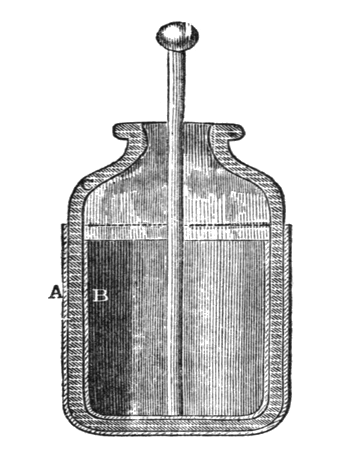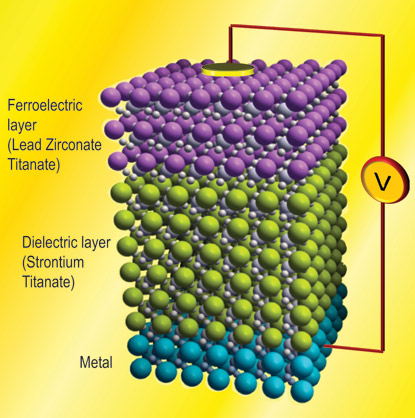
Negative Capacitance
September 22, 2011 The preeminent physicist and Nobel Laureate, Niels Bohr, once said that there are "Two sorts of truth: trivialities, where opposites are obviously absurd, and profound truths, recognized by the fact that the opposite is also a profound truth."[1] Physics is replete with examples of this, the most important of which is the wave-particle duality of matter. This duality of concepts was the topic of a book by Gerald Holton, who called these thema/antithema pairs.[2] Likewise, pursuing the opposite has been fruitful in many other studies. There's the positron, paired with the electron; and the semiconductor hole, paired with electrons in solids. In cosmology, there's dark energy. It seems that if you want to discover something new, just turn a physical principle on its head and check to see which way the blood flows. Capacitance is a well known concept in electostatics. The capacitor was invented by the German cleric, Ewald Georg von Kleist, in 1745, and independently by the Dutch scientist, Pieter van Musschenbroek, sometime between 1745 and 1746.[3] Van Musschenbroekof resided in Leiden (Leyden), so the capacitor was known as a Leyden jar. | A Leyden jar in cross-section. The glass jar (C) is coated on the inside (B) and outside (A) with metal foil. The region near the mouth of the jar is uncoated to prevent discharge along that path. Electrodes connect to the inner and outer foils. (Via Wikimedia Commons). |
(1/CTotal) = (1/C1) + (1/C2) + (1/C3) + ... (1/Cn)This formula is true for common capacitors, but what if it were possible to make a device that has negative capacitance? If a negative capacitance were placed in series with a normal ("positive") capacitor, the absolute values of capacitance would add up. That's a nice trick, but how do you make a negative capacitor? It's not surprising that the secret to negative capacitance is the dielectric. A negative capacitor is described in a recent paper in Applied Physics Letters by a physicist at the University of California, Berkeley, and engineers at Berkeley and the University of Michigan (Ann Arbor, Michigan).[4-5] They formed a bilayer of the ferroelectric, lead-zirconate titanate (Pb(Zr0.2Ti0.8)O3), and the normal dielectric, strontium titanate (SrTiO3), and found that the capacitance of the layer was larger than what would exist for the strontium titanate layer alone (see figure).[4-5]
 | Artist's rendition of a lead zirconate titanate/strontium titanate negative capacitance stack. (Image: Asif Khan, University of California, Berkeley). |
References:
- As quoted by his son, Hans Bohr, in "My Father", published in Neils Bohr : His Life and Work (1967), p. 328, via Wikiquote.
- Gerald Holton, "Thematic Origins of Scientific Thought: Kepler to Einstein," (Harvard University Press, 1988), 510 pages (via Amazon).
- Leyden Jar page on Wikipedia.
- Sarah Yang, "Ferroelectrics could pave way for ultra-low power computing," University of California - Berkeley Press Release, September 12, 2011.
- Asif Islam Khan, Debanjan Bhowmik, Pu Yu, Sung Joo Kim, Xiaoqing Pan, Ramamoorthy Ramesh and Sayeef Salahuddin, "Experimental evidence of ferroelectric negative capacitance in nanoscale heterostructures," Applied Physics Letters, vol. 99, no. 11 (12 September 12, 2011), Document No. 113501.
- Gerald Holton, "Thematic Origins of Scientific Thought: Kepler to Einstein," (Harvard University Press, 1988), 510 pages (via Amazon).